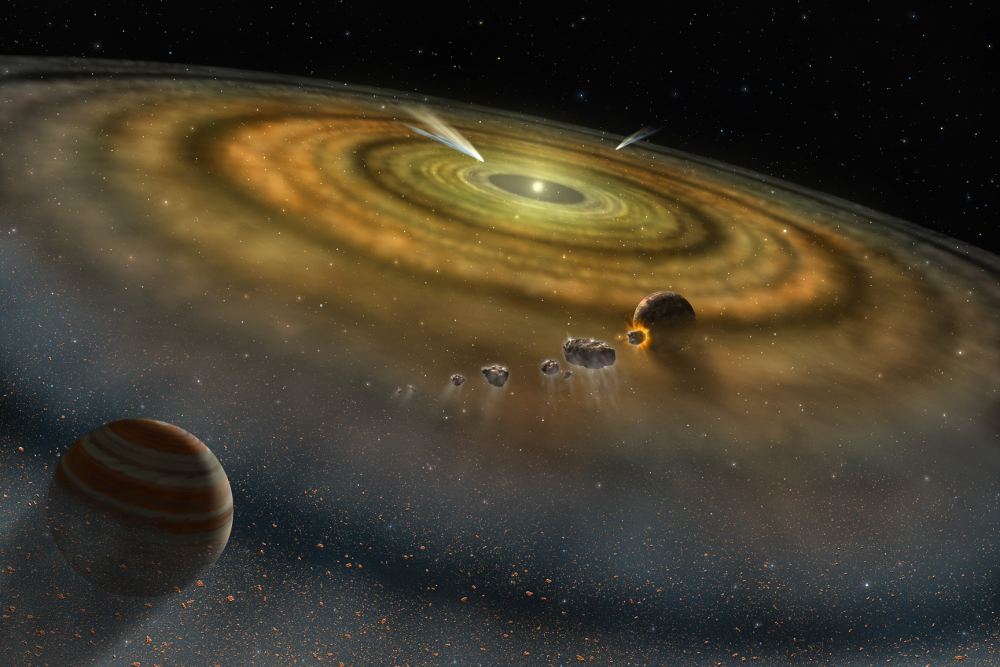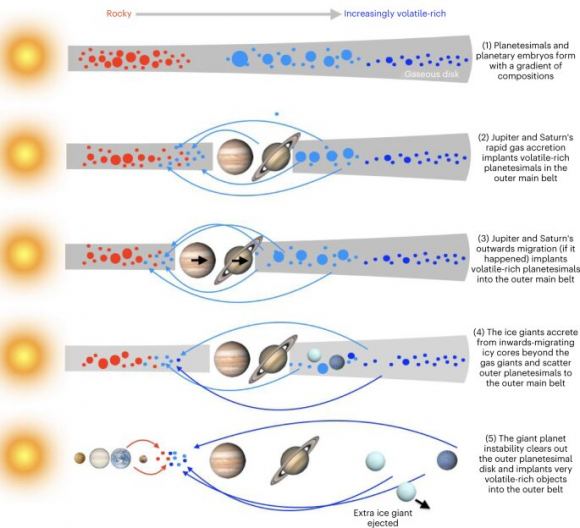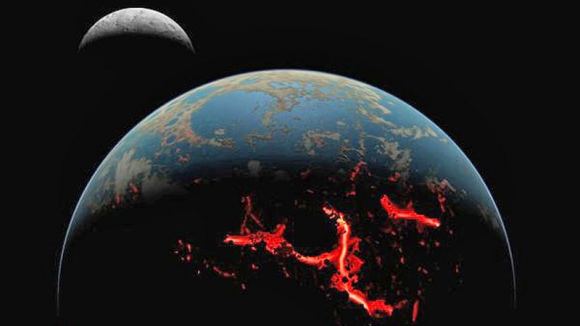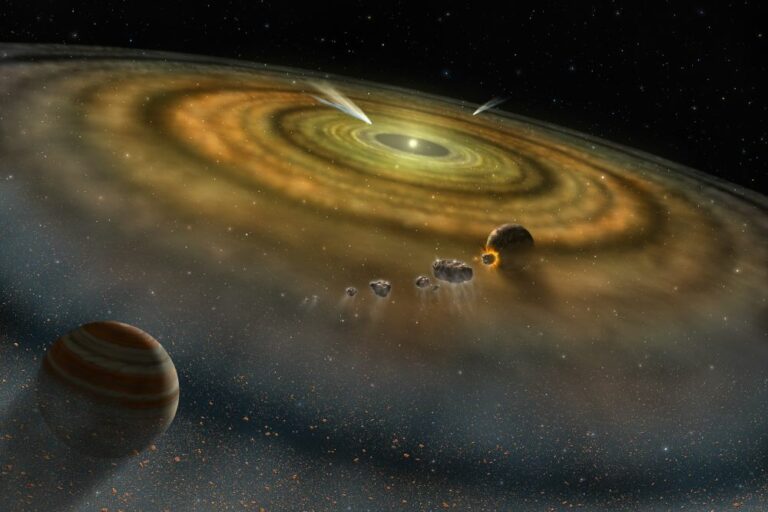A group of asteroids rich in water has been discovered by astronomers.
Have you ever stood by the sea or visited a coastline and pondered the origins of the vast bodies of water? The answer dates back to 4.5 billion years ago, when planetesimals and other water-rich objects brought water to Earth during its formative years.

The recent discovery of a group of previously unknown asteroids between Mars and Jupiter supports this theory. Geoscientists from around the world used the NASA Infrared Telescope in Hawaii to study these “low-albedo” or “dark” objects and determine their chemical makeup by analyzing the light reflected off their surfaces. Based on their findings, the researchers created a model of these newly discovered asteroids.
Measuring Dark Asteroids
“The study’s lead author, Dr. Driss Takir, an astrophysicist at the NASA Johnson Space Center, stated that the astronomical measurements enabled the identification of Ceres-like asteroids with a diameter as small as 100 kilometers. These asteroids are currently located in a restricted region between Mars and Jupiter near the orbit of Ceres.
The team’s analysis of the infrared spectra supports the conclusion that the newly discovered asteroids, like Ceres, have minerals on their surface that originated from contact with liquid water. Moreover, these dark asteroids offer evidence of the primordial solar system planetesimals and the conditions that existed in the solar nebula,” explained Dr. Mario Trieloff, a member of the study team from the Institute of Earth Sciences in Heidelberg, Germany. “These small bodies and their fragments, the meteorites, contain a plethora of remnants that directly indicate the process of planet formation and serve as the remnants of the materials that formed the planets in our solar system over 4.5 billion years ago,” he added.

How Did Asteroid Water End Up on Earth?
According to planetary scientists, a significant portion of Earth’s water is believed to have come from smaller celestial bodies that collided and merged to form larger bodies, ultimately leading to the formation of our planet. These water-rich remnants, which are dark in color, contain inclusions of water such as small fluid deposits within the rocks or icy layers. Alternatively, they may have hydrated minerals in which water is part of the crystalline structure of the rock, such as silicates, which constitute much of Earth’s crust, or clay minerals.
Many larger asteroids show signs of hydration, and when they combine, as occurred during Earth’s formation, the water and minerals combine to form the growing body. These small celestial bodies are also quite porous, indicating that they are part of the original inventory of the solar system. “Shortly after the formation of the asteroids, temperatures were not high enough to convert them into a compact rock structure; they maintained the porous and primitive character typical of the outer ice planets located far from the sun,” said Dr. Wladimir Neumann, a member of Professor Trieloff’s team. This porosity supports the idea that these bodies are rich in water.

What Water-Rich Asteroids in the Belt Tell Us About Early Solar System History
According to the study, the Ceres-like objects exhibit specific characteristics and are located within a relatively narrow region of the outer Asteroid Belt, which raises some intriguing implications. These objects were probably formed in a cold region at the edge of our solar system, similar to Ceres. Subsequently, the trajectory of these asteroids was altered due to the gravitational disruptions caused by the orbits of large planets like Jupiter and Saturn. Consequently, they ended up in the current Asteroid Belt.
Ceres, similar in composition to the smaller asteroids, has a water ice component. The ice is present both on its surface and inside the dwarf planet. The deposits of ammonium salts found near one of Ceres’s craters suggest that it originated in the outer solar system. Jupiter’s migration to its current position caused disturbances that shifted Ceres to its present location in the Belt. This also moved other planetesimals and asteroids, which eventually became part of other worlds closer to the Sun.
The history of this ancient event is still evident today in the oceans of Earth and Mars’s current water-ice deposits. Thus, the next time you visit the seashore, remember that the water you see was likely a result of the bombardment of icy asteroids and comets. These cosmic objects transported water from the outer regions of the solar system and delivered it to the newly formed worlds of the inner solar system.
Do not forget to share your opinion with us to provide you with the best posts !




0 Comments